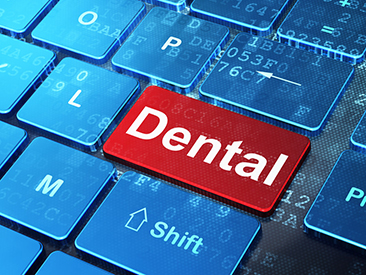The American Dental Association (ADA) CDT describes Code D4381 – localized delivery of antimicrobial agents (LDAA) via a controlled release vehicle into diseased crevicular tissue, per tooth, as “FDA approved subgingival delivery devices containing antimicrobial medications are inserted into periodontal pockets to suppress the pathogenic microbiota. These devices slowly release the pharmacological agents so they can remain at the intended site of action in a therapeutic concentration for a sufficient length of time.” This reduces the bacteria load and thereby lessens gum inflammation.
D4381 is used to indicate any crevicular agent used to treat periodontal disease, such as Arestin, Periochip, and Atridox. Billing for LDAA can be complex, which is why an increasing number of dental practices now rely on professional dental billing services. Many carriers do not cover LDAA as part of the contract, while some reimburse it as a benefit when it is administered in refractory areas after root planing and/or surgery. Reimbursement for D4381 also varies greatly among payers. Here are the key points that dental practices should know about using this code and submitting claims to ensure appropriate reimbursement.
- D4381 is reported on a per tooth basis. The fee for each tooth should vary by the number of sites treated. Documentation should state that the fee is based on number of sites treated and amount of material used.
- Carriers who reimburse D4381 usually do so only for refractory sites limited to two or three teeth per quadrant.
- To bill D4381, a time lapse between the active therapy and the crevicular treatment is required, usually at least four to six weeks.
- The claim form should include case type (usually a diagnosis of moderate to severe periodontitis), progressive periodontal probing, a narrative stating that the patient has previously undergone treatment along with the dates of that treatment, and the pockets being treated.
- “Minocycline” should be indicated on the ADA claim form and not the brand name of the LDAA.
- The claim should be submitted with periodontal charting during the last six months and a complete set of x-rays. Comparative periodontal charting can be useful to show that in conventional therapy (root planing and scaling) has not been effective.
- If the patient has a medical condition such as diabetes or heart disease and is not a candidate for osseous surgery, this must be indicated on the claim form. Such patients may be eligible for an alternative benefit for placement of LDAAs.
- Even if LDAAs are covered, payers may reimburse only 8 sites or less per visit.
According to a recent article in Dentistry IQ, claims for code D4381 may be denied due to the following reasons:
- The patient’s plan does not cover LDAA placement.
- The patient does not have a history of severe periodontitis or deep pockets, 5 mm to 7 mm, indicated on periodontal charting within six months.
- The patient has not undergone periodontal therapy, such as scaling and root planing, osseous surgery, or ongoing periodontal maintenance visits.
Preauthorization of dental treatment is important to ensure coverage. With a reliable dental billing company, dentists do not have to worry about coding and billing issues. These companies have expert teams that are proficient in CDT and ICD-10 coding and also provide dental insurance verification services. By ensuring clean claim submission, outsourcing dental billing and coding helps providers maximize insurance benefits.




